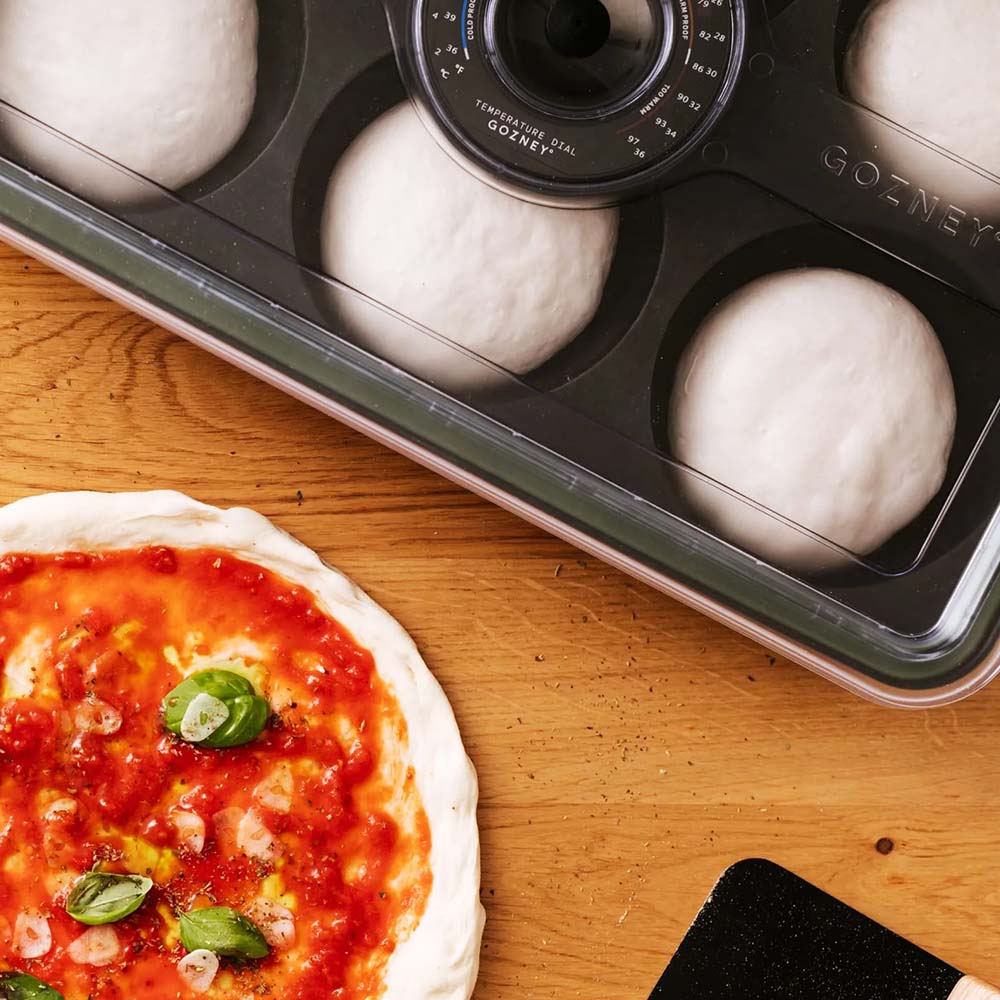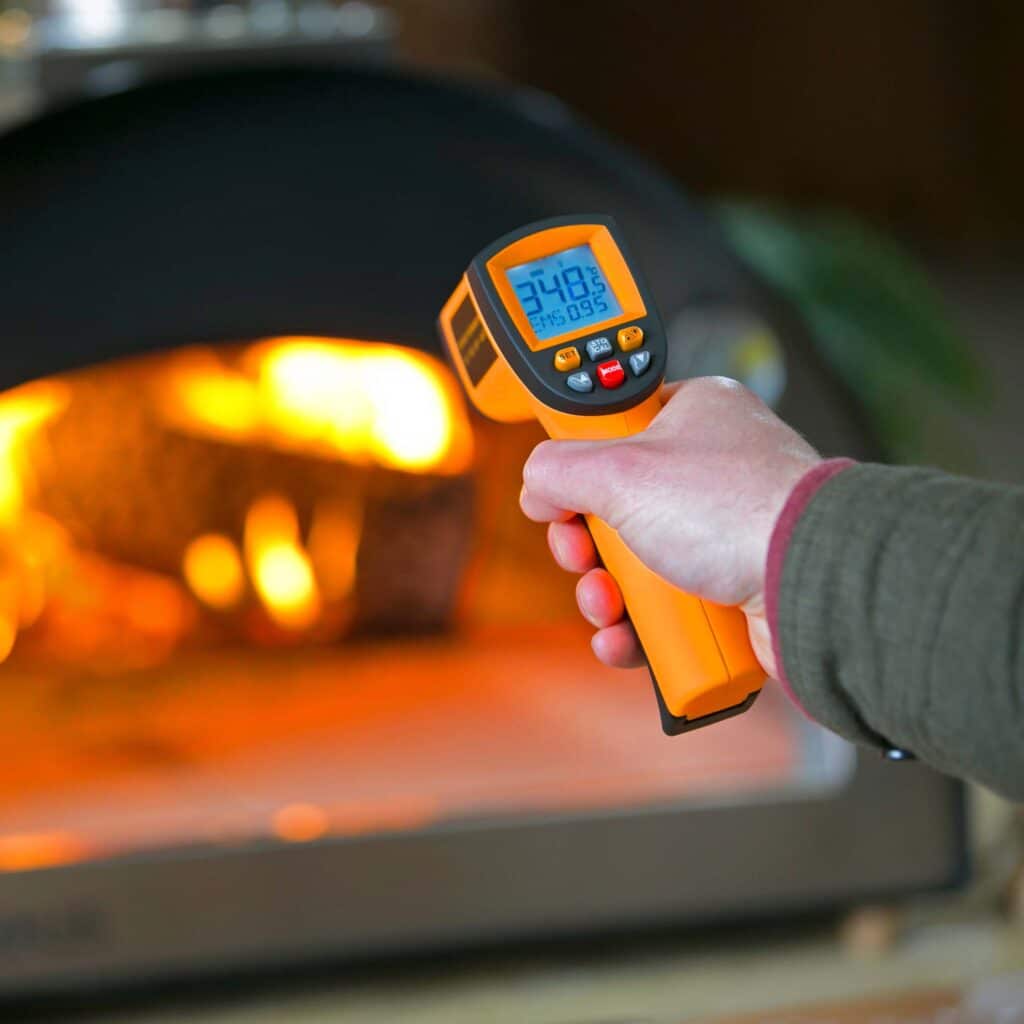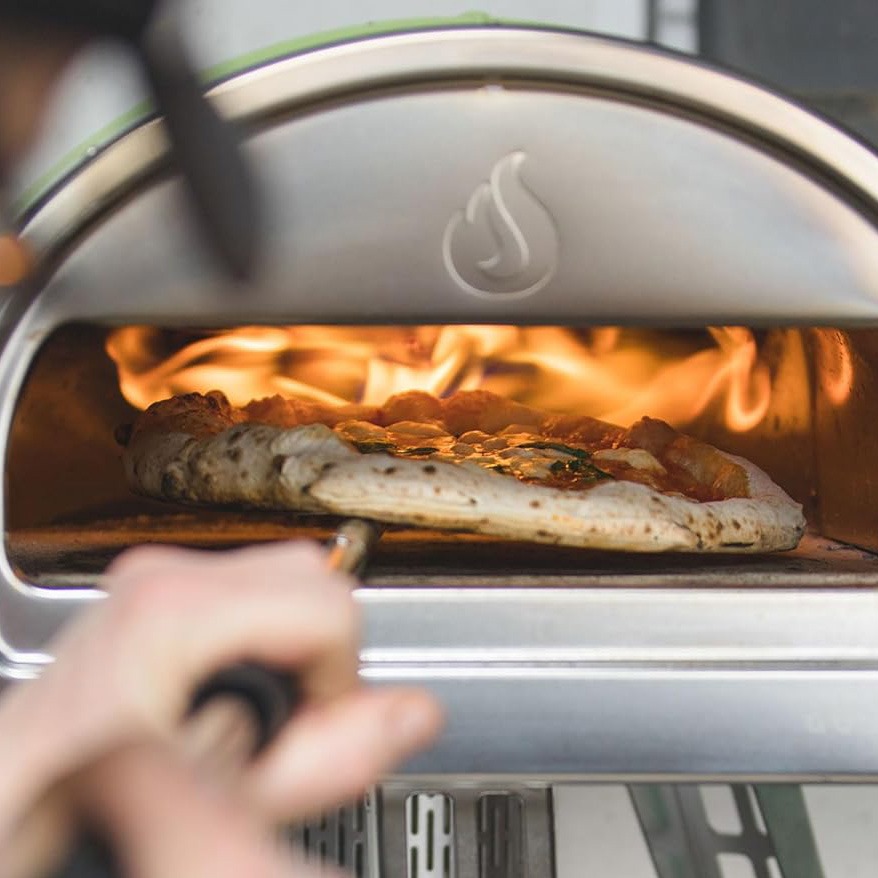All Blogs, Food, Pizza Ovens
The 5 Biggest Mistakes That Are Ruining Your Pizzas
Cooking pizza in a wood or gas-fired pizza oven is a game-changer. Delivering that authentic, crispy crust and smoky flavour that standard kitchen ovens just can’t match. Whether you’re using an Ooni, Gozney, Clementi, Igneus, or DeliVita pizza oven, the potential for pizza perfection is there for the taking. However, even with the best equipment, achieving that perfect pizza can be tricky. Many people fall into the same common pitfalls that can easily be avoided by making some subtle changes.
In this blog, we’ll uncover the five biggest mistakes that could be ruining your pizzas. We will provide practical tips to help you avoid them. Let’s dive in…

1. Not Letting Your Dough Proof for Long Enough
If you’ve had a go at making your own pizza dough, we salute you! It really does make the world of difference to the final pizza. It can be really satisfying when you take the pizza out of the pizza oven, knowing that you’re the sole creator of that light, airy dough. However, it must be said, making the dough is one of the more complicated bits of the whole pizza making procedure, and one that can often go wrong!
One of the most critical steps in pizza making is allowing your dough to proof for the right amount of time. Proofing, or fermenting, is the process where the dough rises and develops flavour and texture. Skipping or shortening this step can result in a dense, tough crust. Instead of the airy, chewy texture that characterises great pizza.
When using wood or gas-fired pizza ovens like Ooni, Gozney, Clementi, Igneus, or DeliVita, proper proofing is even more essential. This is due to the high temperatures these ovens reach. A well-proofed dough has developed gluten, which gives the dough elasticity. Allowing it to stretch thin without tearing and creating those aerated bubbles in the crust.
Typically, pizza dough needs to proof for at least 24 hours in the fridge. This slow fermentation not only improves the texture but also enhances the flavour as the yeast works its magic over time. If you rush this process, the dough won’t have the same depth of flavour. It may not cook evenly, leaving you with a pizza that’s raw in some places and overcooked in others.
Watch our YouTube video showing you ‘How to make overnight pizza dough‘
2. Using a Rolling Pin to Shape Your Dough
Using a rolling pin to shape your pizza dough is a common mistake that can drastically affect the final product. While it might seem like an easy way to get a uniform shape, rolling pins can squeeze out the air that has developed during the proofing process. Leading to a dense, flat crust.
When you use your hands to stretch and shape the dough, you preserve those precious air bubbles. These bubbles create a light, airy texture and beautiful pockets of crispiness when cooked. Hand-stretching also allows you to feel the dough’s elasticity and ensures an even thickness. This is crucial for cooking in high-heat wood or gas-fired pizza ovens.

3. Not Allowing the Stone to Get Hot Enough
A really common mistake when using a wood or gas-fired pizza oven is not allowing the stone to get hot enough before launching your pizza. The pizza stone needs to reach a temperature of at least around 350-400°C to ensure that your pizza cooks evenly from below.
The main reason this mistake is so common is because people rely too heavily on the built in thermometer. Built in thermometers only assesses the ambient temperature of the oven. Or, have not followed the correct heating procedure.
Visit our YouTube page to see lighting videos.
If the stone isn’t adequately heated, the dough will cook slowly. Leading to a soggy base instead of a firm crust. This is particularly important for ovens like Ooni, Gozney, Clementi, Igneus, Gino, Inferno and DeliVita. They are designed to cook pizzas quickly at high temperatures.
Always preheat your oven and stone for at least 20-30 minutes, ensuring the stone has absorbed enough heat. Quite often, the stone takes longer to get up to ideal temperature than the ambient temperature of the oven. For that reason, we recommend you buy an Infrared Digital Thermometer to accurately measure the temperature of the stone. This extra step will make a significant difference in the quality of your homemade pizza.

4. Using a Hot or Damp Peel
Issues with launching pizzas into the oven has to be the most common issue we’re asked about. Using a hot or damp peel can be a disaster when trying to launch your pizza. This is because it makes the dough stick to the peel. When launching your pizza into the oven, the peel needs to be cool and dry to ensure the dough slides off smoothly.
Every time you add dough to the peel, a small amount of condensation transfers from the dough to the peel. When you’re using the peel in a really hot pizza oven, it can heat up the metal. This can also promote sticking of the dough to the peel.
To avoid this mistake, always start with a cool, dry peel. Lightly dust it with flour or semolina to create a barrier between the dough and the peel. This allows the pizza to slide off effortlessly, maintaining its shape. Ensuring it cooks evenly in your pizza oven. Paying attention to the condition of your peel will help you achieve a perfect launch and a beautifully cooked pizza every time.

5. Not Turning Your Pizza Enough
The final common mistake we hear about is not turning your pizza enough, which leads to uneven cooking. Wood and gas-fired pizzas ovens reach temperatures of 450°C+ and can cook pizza in as little as 60 seconds.
Although these ovens are amazing at producing even heat distribution across the whole oven, the main heat source is coming from one side of the oven which can cause one side of the pizza to cook faster than the other. If you don’t rotate your pizza regularly, you may end up with a crust that’s burnt on one side and undercooked on the other.
To achieve a evenly cooked pizza, use a turning peel to rotate your pizza every 15-20 seconds. This ensures that all sides of the pizza are exposed to the oven’s hottest spots, promoting even cooking and bubbling of the crust and toppings. By keeping a close eye on your pizza and turning it frequently, you’ll enjoy a perfectly cooked, delicious pizza every time.
Final Thoughts
Avoiding these common mistakes can significantly improve your pizza-making skills. Even if you’ve experienced some of these mistakes for yourself, don’t be disheartened as the next time you make pizza, you’ll know what to do! If you’d like any help choosing any of the accessories that we’ve mentioned throughout this blog, our team would be delighted to help.
You can contact us today on 01423 608648 or browse all our pizza ovens, accessories, fuel and groceries below.



